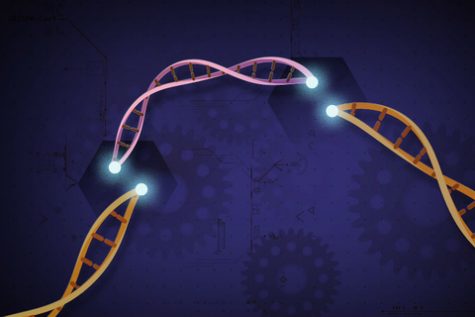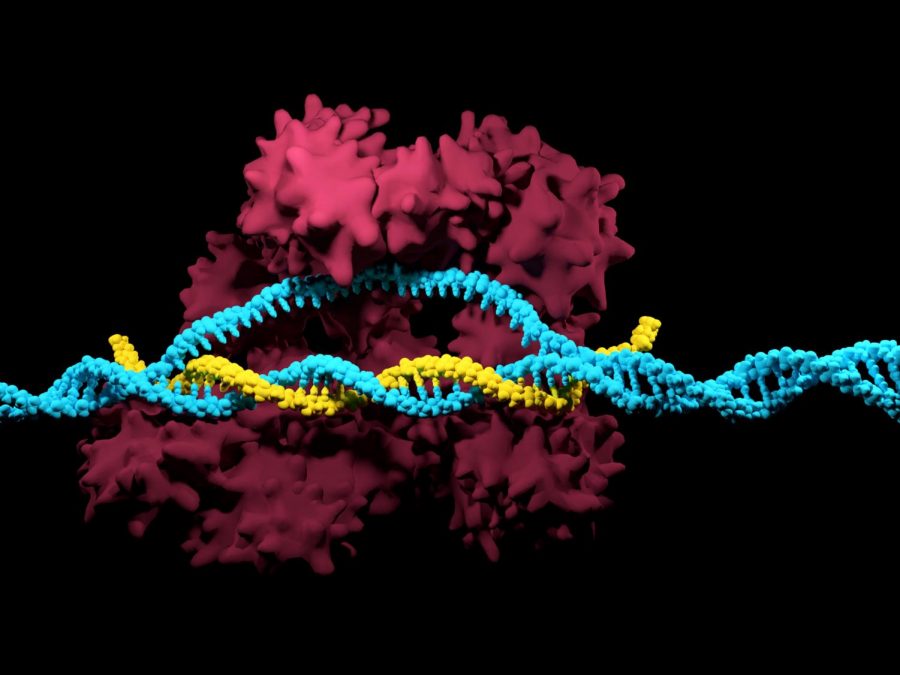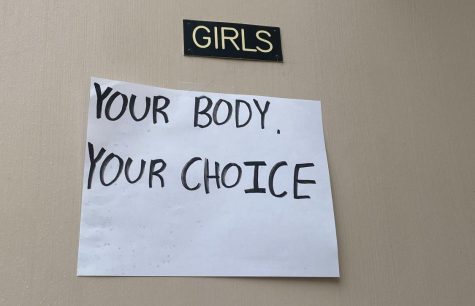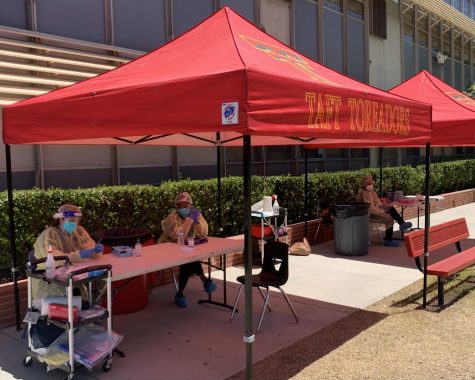Has Science Gone too Far?: CRISPER-Cas9 and How it is Forcing Evolution
CRISPR-Cas9 is a genome-editing tool discovered relatively recently that has taken the science world by storm.
CRISPR is an acronym for “Clustered Regularly Interspaced Short Palindromic Repeats”. It’sThe CRISPR genome design technology allows scientists to simply and exactly edit the DNA of any genome.
According to synthego.com, “CRISPR palindromic repeats play an important role in microbial immunity. When a virus infects a microbial cell, the microbe employs a special CRISPR-associated nuclease (Cas9) to chop off a piece of the viral DNA. The nuclease is directed to its target sequence by a short RNA fragment known as a guide RNA (gRNA), which is complementary to the target segment of the viral genome. The snipped DNA fragment may then be stored between the palindromic CRISPR sequences to retain a genetic memory for disabling future infections from the same viral strain.”
This revolutionaryThise revolutionary breakthrough was made came when scientists finally learned how the CRISPR system worked in bacteria and figured out how to reprogram it to allow it can to be used to edit in any species.
CRISPR has become popular because of it’s the simplicity, inexpensiveness, and availability of its use. The tool relies on three components: the molecular scissors, a CRISPR-associated (Cas) nuclease, and the GPS guiding it to the appropriate site, the guide RNA (gRNA). It differs from previous genetic engineering techniques because it allows for the introduction or removal of more than one gene at a time. This makes it possible to manipulate many different genes in a cell line very quickly, which reduces the process from taking a number of years to just a few weeks.
From its original discovery in 1987 by a Japanese team of scientists at Osaka University, it took around two decades before Eugene Koonin and his colleagues at the National Center for Biotechnology Information demonstrated for the first time how the CRISPR-Cas 9 mechanism worked in 2008 (whatisbiotechnology.org).
CRISPR has primarily been used for treating diseases and has also had a huge impact on agriculture and editing plant genomes. CRISPR technology has also shown to be potential in other areas, such as developing disease models and biofuels.
However, CRISPR-Cas 9 goes beyond simply dealing with diseases and viruses or improving our agriculture (as amazing as those are). In January of 2013, a number of researchers at different laboratories published papers within a few weeks of each other that demonstrated how the system could be used to edit genomes in human cells.
Using human embryos sourced from a fertility clinic, Chinese scientists tried to use CRISPR-Cas9 to edit a gene that causes beta-thalassemia in every cell. The donor embryos used would not have resulted in a live birth, however. Either way, it ended quite badly. Out of 86 embryos injected, just a measly 28 had been successfully spliced, and very few contained the genetic material the researchers intended to find. On top of that, it’s very likely more damage was done that went undocumented. The New York Times explained that “The Chinese researchers point out that in their experiment gene editing almost certainly caused more extensive damage than they documented\; they did not examine the entire genomes of the embryo cells.”
Between the failed experiment and the general issue of ethics, this controversial discovery has arisen many questions that caused a huge amount of controversy within the scientific community. In November 2016, another group of Chinese scientists became the first to use CRISPR-Cas9 on an adult human, injecting a lung cancer sufferer with the patient’s immune cells modified by CRISPR to theoretically help the patient’s body fight back against cancer, which was successful.
Then, in a study published in August 2018, scientists successfully ‘edited’ human embryos, removing the portion of DNA that can lead to hereditary heart disease. While it is one thing to be able to remove the DNA that could lead to life-threatening diseases, there are genuine ethical concerns at play here.
Firstly, this is still a relatively new engineering technique. One that does not guarantee success every time. Even if the process of tampering with the embryos worked flawlessly, there is no telling what side-effects might occur later on during a person’s life.
Even though no one can argue the benefits of being able to prevent viruses and diseases from within a human embryo, this is a double-edged sword. For example, if a scientist can identify the gene that causes breast cancer, they could potentially change anything about a person. That means people could literally make superhumans. They’d be able to program their children to be smarter, faster, or have preferred features.
This is essentially forcing evolution. Even if people accept this is something we have the potential to do, it does not change the fact that it isn’t something we should. CRISPR-Cas9 will likely become heavily commercialized, meaning the procedure itself would be cheap, but only the wealthy would be able to afford the hefty price it would cost to genetically modify their offspring and thus increasing the disparity between the wealthy and the middle and lower classes. We have already seen other methods used to determine things such as gender. A perfect example is Chrissy Teigan and John Legend choosing the gender of their child (a girl) through in vitro or IVF. The method was originally used to screen for genetic disorders, but a result of modern IVF is learning the gender of the embryos. According to Jeffrey Steinberg, M.D., a leading IVF specialist, there is a growing number of couples—some 70 percent of the patients in Steinberg’s practice—who use IVF specifically so that they can choose a son or a daughter.
If we are already seeing a trend with the specific selection of gender by couples, it is highly likely that the same thing would be in store for CRISPR. This is going too far. As fascinating as this opportunity seems, it doesn’t mean it should be seized. It’s better to listen to the group of American scientists who have told us to stay away from manipulating these kinds of things, and just let our future generations be-at least in terms of any personal preferences people have.













